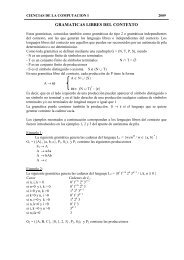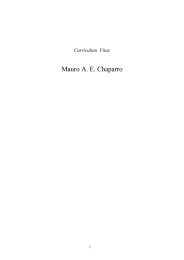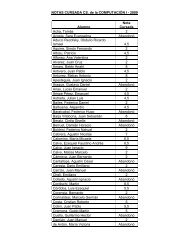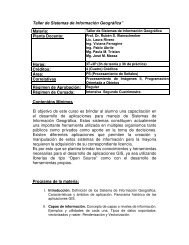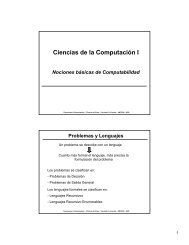Programa Fisica general - Universidad Nacional del Centro de la ...
Programa Fisica general - Universidad Nacional del Centro de la ...
Programa Fisica general - Universidad Nacional del Centro de la ...
You also want an ePaper? Increase the reach of your titles
YUMPU automatically turns print PDFs into web optimized ePapers that Google loves.
UNIVERSIDAD NACIONAL DEL CENTRO<br />
DE LA PROVINCIA DE BUENOS AIRES<br />
PROGRAMA ANALÍTICO DE LA ASIGNATURA<br />
FÍSICA GENERAL<br />
DEPARTAMENTO RESPONSABLE CIENCIAS FÍSICAS Y AMBIENTALES<br />
ÁREA CIENCIAS BÁSICAS<br />
PLAN DE ESTUDIOS<br />
Ingeniería <strong>de</strong> Sistemas<br />
Profesorado en Informática<br />
PROGRAMA ANALÍTICO DE LA ASIGNATURA<br />
FÍSICA GENERAL (04121242)<br />
(I) TEORIA<br />
1) SISTEMAS DE REPRESENTACION: Sistemas <strong>de</strong> representación p<strong>la</strong>na. Método<br />
<strong>de</strong> Monge. Perspectivas. Introducción al dibujo geométrico y a mano alzada. Normas<br />
IRAM para confección <strong>de</strong> p<strong>la</strong>nos. Introducción a los sistemas CAD.<br />
2) MOVIMIENTO RECTILINEO: Velocidad y aceleración en el movimiento<br />
rectilíneo. Rectilíneo uniforme. Rectilíneo uniformemente acelerado. Caída libre.<br />
Vector velocidad y aceleración en el movimiento rectilíneo. Composición <strong>de</strong><br />
velocida<strong>de</strong>s y aceleraciones.<br />
3) MOVIMIENTO CURVILINEO: Velocidad y aceleración en el movimiento<br />
curvilíneo. Componentes normal y tangencial <strong><strong>de</strong>l</strong> vector aceleración. Curvilíneo con<br />
aceleración constante. Tiro oblicuo. Velocidad y aceleración angu<strong>la</strong>r en el movimiento<br />
circu<strong>la</strong>r. Re<strong>la</strong>ciones vectoriales en el movimiento circu<strong>la</strong>r.<br />
4) LEYES DE NEWTON Y APLICACIONES: Primera ley <strong>de</strong> Newton. Principio<br />
<strong>de</strong> conservación <strong><strong>de</strong>l</strong> momentum lineal. Segunda y tercera leyes <strong>de</strong> Newton. Re<strong>la</strong>ción<br />
entre fuerza y aceleración. Movimiento bajo una fuerza constante. Fuerza resultante.<br />
Estática: Equilibrio <strong>de</strong> una partícu<strong>la</strong>. Fuerzas <strong>de</strong> fricción. Momentum angu<strong>la</strong>r.<br />
5) TRABAJO Y ENERGIA: Trabajo. Potencia. Energía Cinética. Trabajo <strong>de</strong> una<br />
fuerza constante. Energía potencial. Re<strong>la</strong>ción entre fuerza y energía potencial.<br />
Conservación <strong>de</strong> <strong>la</strong> energía <strong>de</strong> una partícu<strong>la</strong>. Fuerzas no conservativas y disipación <strong>de</strong><br />
<strong>la</strong> energía.<br />
6) OSCILACIONES: Cinemática <strong><strong>de</strong>l</strong> movimiento armónico simple (MAS). Fuerza y<br />
energía en el MAS. Ecuación <strong>de</strong> movimiento <strong><strong>de</strong>l</strong> MAS. Péndulo simple. Superposición<br />
<strong>de</strong> dos MAS: <strong>de</strong> igual dirección y frecuencias iguales y distintas; y con direcciones<br />
perpendicu<strong>la</strong>res. Osci<strong>la</strong>ciones amortiguadas. Osci<strong>la</strong>ciones forzadas.<br />
7) TERMOMETRIA: Temperatura <strong><strong>de</strong>l</strong> Gas I<strong>de</strong>al. Ley <strong>de</strong> Boyle. Ecuación <strong>de</strong> Estado.<br />
Temperatura y Energía molecu<strong>la</strong>r. Energía interna <strong>de</strong> un gas i<strong>de</strong>al. Experimento <strong>de</strong><br />
Joule. Gases reales. Ecuación <strong>de</strong> Van <strong>de</strong>r Waals. Isoterma <strong>de</strong> un gas real. Isotermas <strong>de</strong><br />
un sistema gas-líquido.<br />
8) CALORIMETRIA: Energía interna y trabajo. Sistemas <strong>de</strong> muchas partícu<strong>la</strong>s.<br />
Trabajo, calor y ba<strong>la</strong>nce <strong>de</strong> energía. Procesos especiales. Capacidad calorífica mo<strong>la</strong>r.<br />
Procesos reversibles e irreversibles. Entropía y calor. Eficiencia <strong>de</strong> una máquina<br />
térmica en un ciclo <strong>de</strong> Carnot. Ley <strong>de</strong> Entropía.
BIBLIOGRAFÍA<br />
UNIVERSIDAD NACIONAL DEL CENTRO<br />
DE LA PROVINCIA DE BUENOS AIRES<br />
(II) TRABAJOS PRACTICOS<br />
(II.1) SOLUCION DE PROBLEMAS : Mecánica, Termometría y Calorimetría.<br />
(II.2) TRABAJOS DE LABORATORIO:<br />
1) Reg<strong>la</strong>s Básicas <strong>de</strong> Higiene y Seguridad en el Laboratorio <strong>de</strong> Física.<br />
2) Instrumentos <strong>de</strong> medición y medida <strong><strong>de</strong>l</strong> error.<br />
3) Velocidad media vs. Velocidad instantánea.<br />
4) Coeficiente <strong>de</strong> Fricción mediante p<strong>la</strong>no inclinado.<br />
5) Segunda Ley <strong>de</strong> Newton.<br />
6) Conservación <strong>de</strong> <strong>la</strong> energía.<br />
7) Péndulo simple.<br />
8) Calor específico <strong>de</strong> diferentes materiales.<br />
Titulo Autor/es Editorial Año <strong>de</strong> edición<br />
FISICA M.Alonso y Addison-Wesley<br />
1995<br />
E. Finn Iberoamericana<br />
FISICA Tomo I P. Tipler Reverté 1995<br />
FISICA Tomo I R. A. Serway Mc Graw Hill 1999<br />
Geometría Descriptiva F.I. Asensi DOSSAT 1990<br />
FISICA Vol. 1 R. Feynman Fondo Educativo Interameric. 1997<br />
Manual Normas IRAM<br />
Instituto Argentino <strong>de</strong> 2009<br />
p/Dibujo Tecnológico<br />
Normalización y<br />
Certificación (Buenos Aires)<br />
PROFESOR RESPONSABLE<br />
Nombre y Apellido : Dr. HUGO ANIBAL PALACIO<br />
Vigencia 2011<br />
Firma<br />
DIRECCIÓN DEL DEPARTAMENTO<br />
Firma<br />
SECRETARÍA ACADÉMICA<br />
Firma
UNIVERSIDAD NACIONAL DEL CENTRO<br />
DE LA PROVINCIA DE BUENOS AIRES


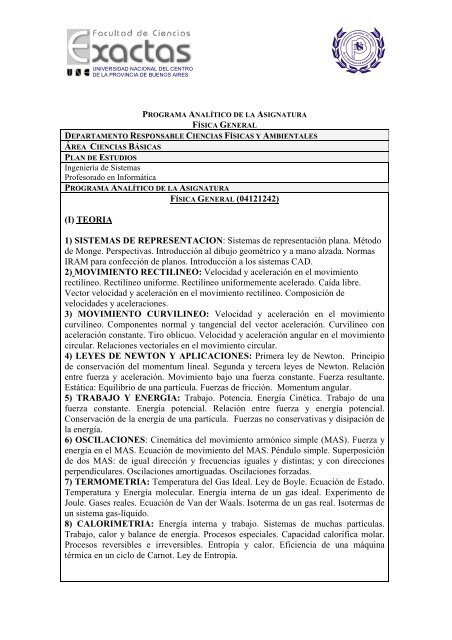
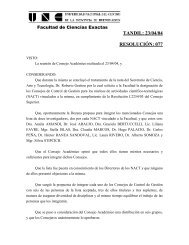
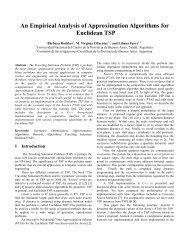
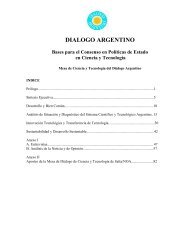
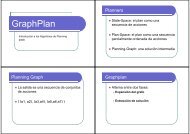
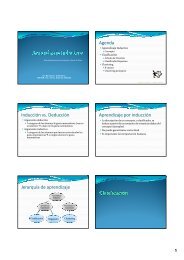
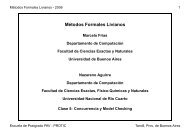
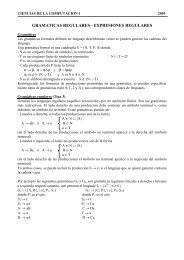

![Clase 13 [pdf]](https://img.yumpu.com/19616969/1/190x245/clase-13-pdf.jpg?quality=85)

